Note: As an Amazon Associate, I may earn from qualifying purchases.
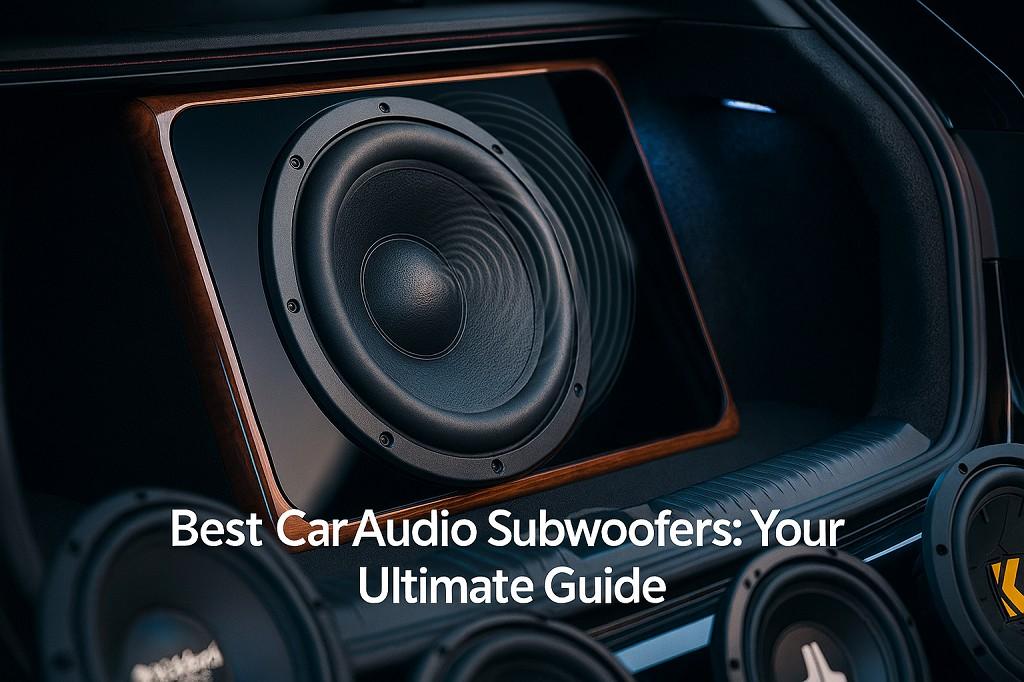
Car audio subwoofers are the heartbeat of your music on the move. Maybe a car drove past you. Its windows vibrated with a deep, thumping bass you felt in your chest. Your current stereo sounded thin in comparison. You crave that immersive experience of feeling the music, not just hearing it. This guide is for you. We will explore different car subwoofers that upgrade your new or used car into a private concert.
What You Need to Know About Car Audio Subwoofers
- Choose the right type: sealed, ported, powered, or bandpass.
- Match the subwoofer size to your car.
- Pick an amp that delivers enough power.
- Avoid common mistakes like poor wiring or mismatched components.
- Test and tune for clean, deep bass.
Why Car Audio Subwoofers Matter More Than You Think
Most people underestimate how much bass affects their listening experience. Low frequencies create the foundation of music. Without them, songs feel incomplete and lifeless. Your factory speakers might reach down to 80Hz or 100Hz. But true bass lives below that range.
Car audio subwoofers reproduce those crucial low notes. A kick drum that should punch your chest becomes a gentle tap without proper bass. A bass guitar that should rumble and growl sounds thin and weak. Electronic music loses its power entirely.
The difference goes beyond just volume. High-quality subwoofers enhance the clarity of your entire sound system. When your main speakers don’t strain to produce bass, they can handle mids and highs more effectively. Vocals become clearer. Instruments separate more distinctly. The whole soundstage improves dramatically.

I’ve always been fascinated by audio systems. The improvement from adding a subwoofer always amazes me. Even a modest 8-inch sub makes factory systems sound exponentially better. The investment pays dividends every single drive.
Your music tastes also determine how much you need a strong bass. Hip-hop and EDM demand serious low-end performance. Rock and metal benefit from tight, punchy bass. Even jazz and classical music gain richness from proper bass reproduction.
Understanding Different Types of Car Audio Subwoofers
The world of car audio subwoofers offers several distinct options. Each type serves different needs, vehicles, and budgets. Understanding these differences helps you make the right choice.
Component Subwoofers: The Customizable Champion
Component subwoofers give you the most flexibility. You buy the driver (the actual speaker) separately. Then you choose or build your own enclosure. This approach lets you optimize every aspect of your system.
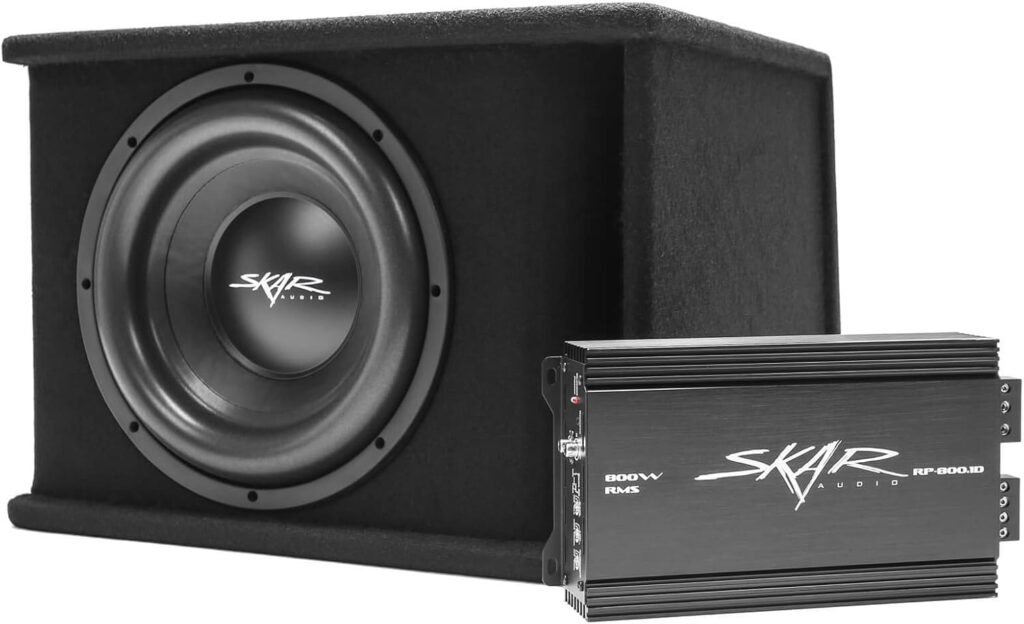
Component subs come in sizes from 8 inches to 18 inches. Most people choose 10-inch or 12-inch models. These sizes balance bass output with space requirements. Smaller subs work well in compact cars. Larger subs suit trucks and SUVs perfectly.
The main advantage is customization. You can build a sealed box for tight, accurate bass. Or you can create a ported enclosure for louder output. You control the internal volume, port tuning, and box construction. This level of control appeals to serious enthusiasts.
The downside? Component subs require more work and knowledge. You need to understand enclosure design principles. You must calculate internal volumes and port dimensions. Mistakes lead to poor performance or damaged equipment.
Enclosed Subwoofers: Plug and Play Convenience
Enclosed car audio subwoofers come ready to install. The manufacturer mounts the driver in a pre-built box. You simply connect your amplifier and secure the enclosure. This simplicity appeals to beginners and time-conscious installers.
These systems maintain specific design parameters. The manufacturer optimizes the box volume for the driver. They tune any ports to specific frequencies. You get reliable, predictable performance without calculations.
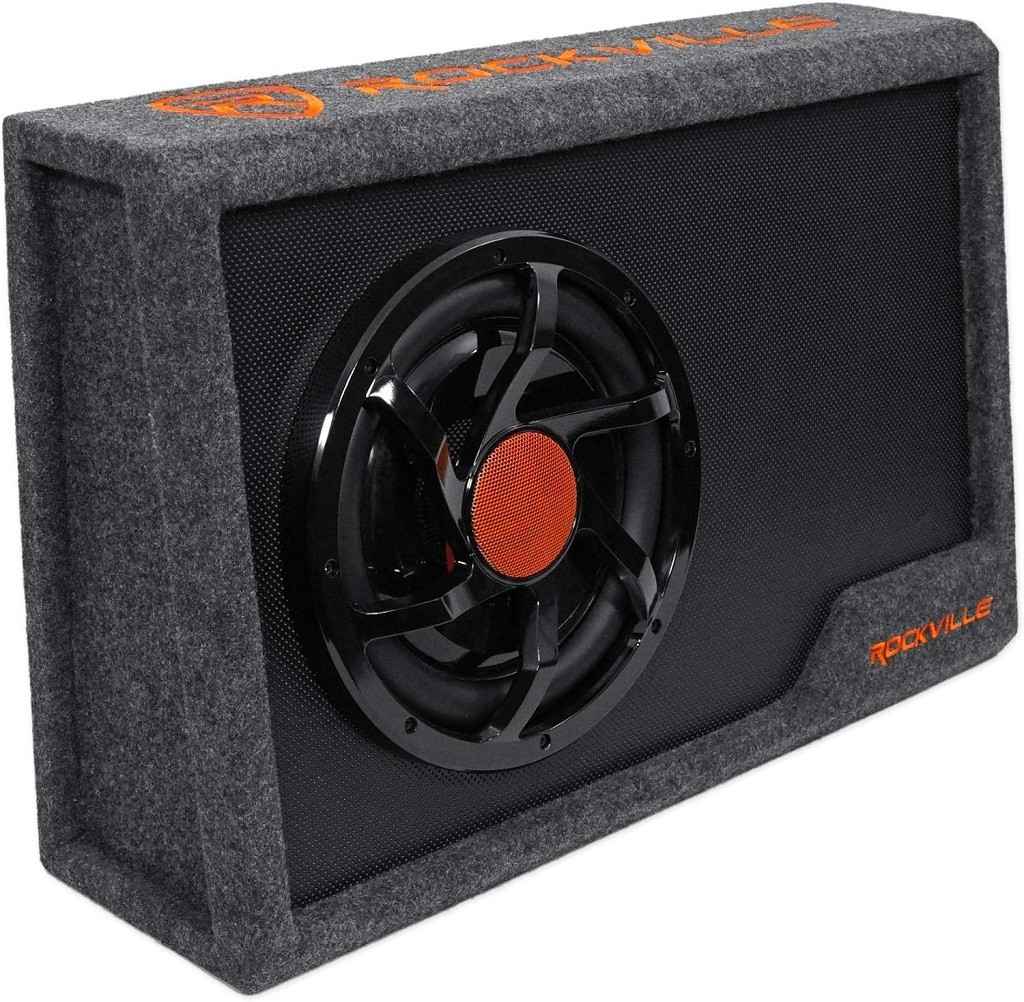
Enclosed subs come in sealed and ported varieties. Sealed boxes deliver tight, accurate bass response. They work brilliantly for rock, metal, and acoustic music. Ported boxes produce louder output at specific frequencies. They excel with hip-hop, EDM, and bass-heavy genres.
The limitation of enclosed subs is flexibility. You can’t modify the enclosure without affecting performance. If you want different bass characteristics, you need a different enclosed system. But for most people, this tradeoff makes perfect sense.
Sealed Enclosure Subwoofers
Sealed subwoofers sit in airtight boxes. They produce precise, clean bass—perfect for jazz, rock, or classical music lovers. However, they need more power to deliver loud volume.
Best for: smaller cars, listeners who value sound accuracy over booming bass.
Ported Enclosure Subwoofers
Ported boxes have a vent (or port) that lets air move more freely. This design creates louder, more resonant bass.
Best for: SUVs, trucks, and genres like EDM, hip-hop, and pop where you want a powerful thump.
Bandpass Subwoofers
A hybrid between sealed and ported, bandpass boxes push sound through a ported chamber. They’re efficient and can be extremely loud.
Best for: show cars or enthusiasts who want maximum volume for bass-heavy tracks.
Powered Subwoofers: All-in-One Solutions
Powered car audio subwoofers integrate everything into one unit. The enclosure contains the driver, amplifier, and crossover. You connect them directly to your head unit. No external amp required.
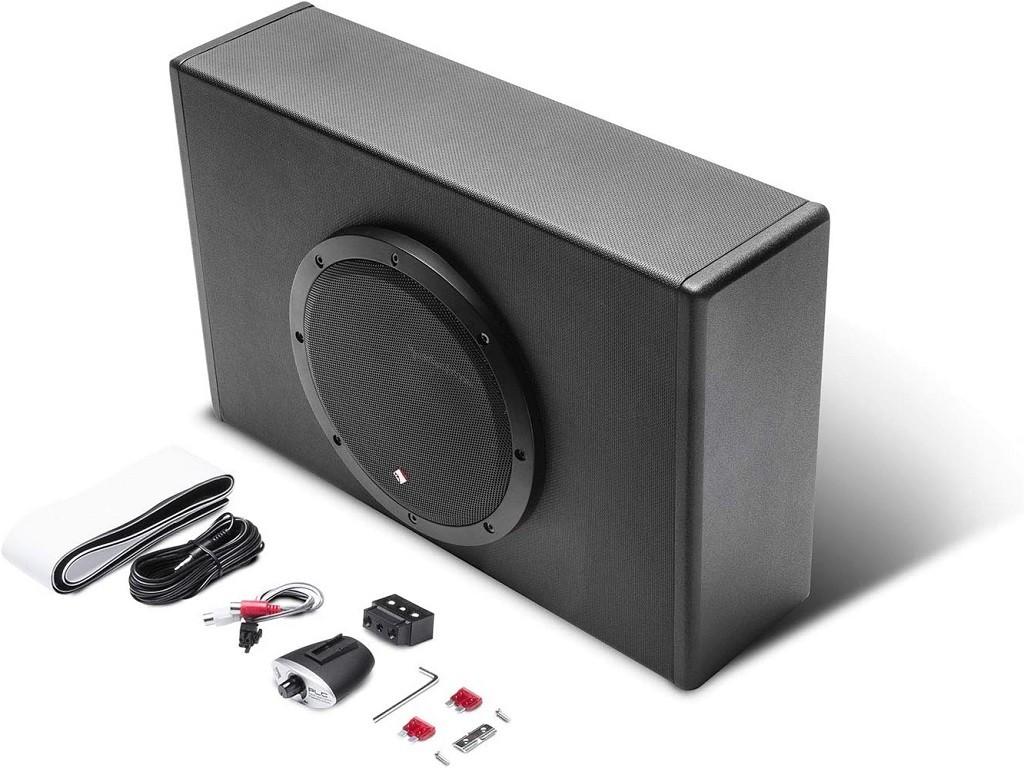
These systems shine in tight spaces. Under-seat powered subs fit where traditional boxes can’t. Spare tire enclosures replace your spare with a subwoofer. These creative designs preserve cargo space while adding bass.
The built-in amplifier simplifies installation tremendously. You run power and ground wires like any amp. But you skip all the signal wiring complexity. The subwoofer connects to your stereo with speaker-level or RCA inputs.
The main compromise is raw output. Powered car audio subwoofers rarely match separate component systems. The integrated amps typically produce 100-300 watts. Dedicated external amps can deliver thousands of watts. But for casual listeners, powered subs provide plenty of punch.
Best for: beginners, or those with limited space or budget.
Free-Air Subwoofers
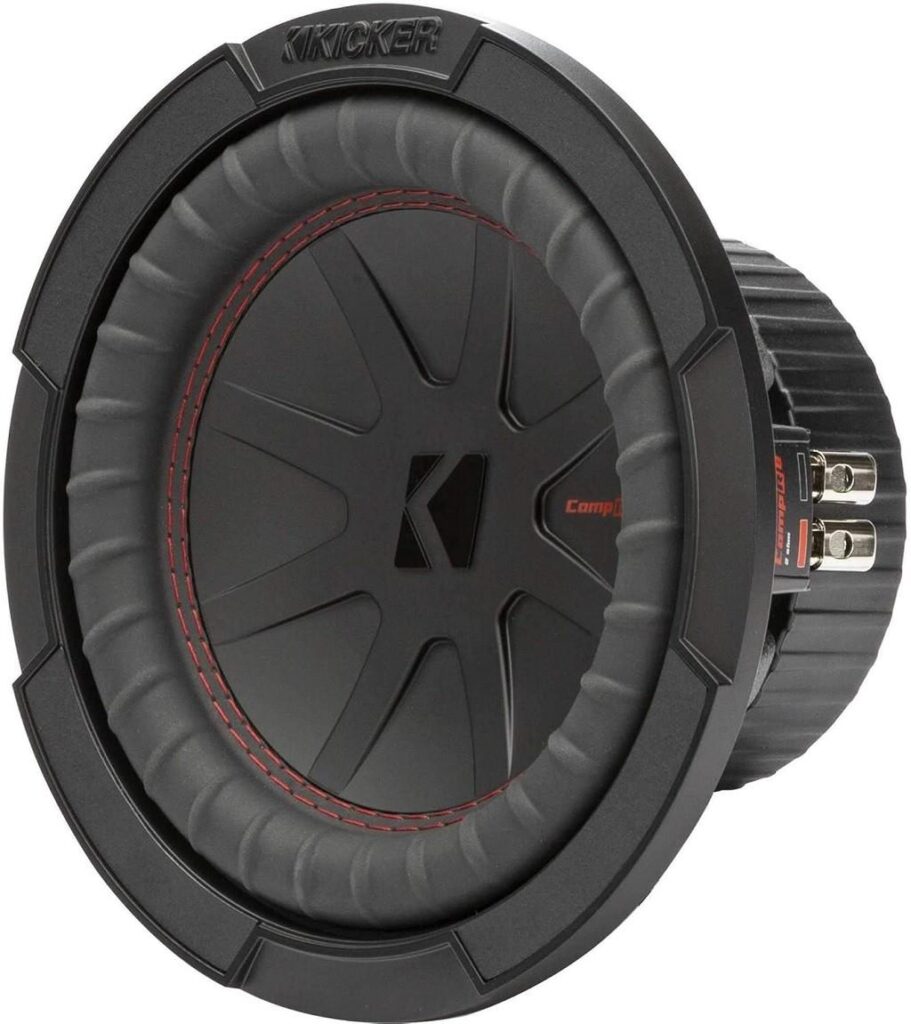
Mounted on a car’s rear deck or door, they don’t need a dedicated box. While they save space, they often lack the depth and punch of enclosed subwoofers.
Best for: drivers who prioritize space savings over maximum bass performance.
Sealed vs. Ported: The Great Debate
The choice between sealed and ported enclosures defines your bass experience. This decision affects sound quality, output, and installation requirements. Understanding the differences helps you choose wisely.
Sealed Enclosures: Accuracy and Control
Sealed boxes are airtight containers. The subwoofer mounts to one side. Air pressure inside acts as a spring. This creates tight, controlled cone movement.
Sealed car audio subwoofers deliver incredibly accurate bass. Transient response is lightning-fast. The cone starts and stops precisely with the music. This makes sealed boxes perfect for complex bass lines. Every note remains distinct and clear.
These enclosures also require less space. A typical 12-inch sealed box needs about 1.5 cubic feet. This compact size fits easily in most vehicles. You preserve more trunk or cargo area.
The tradeoff is efficiency. Sealed boxes require more power for the same output. Your amplifier works harder to achieve the desired volume levels. But the sonic benefits often justify the extra power.
Sealed car audio subwoofers suit smaller vehicles beautifully. In my coworker’s Mini Cooper, a sealed 10-inch sub provided perfect bass. The small enclosure fits behind the passenger seat. It never overpowered the cabin. The bass integrated seamlessly with the door speakers.
Ported Enclosures: Maximum Output
Ported boxes include a tuned opening. The port allows air to move in and out. This design amplifies specific frequencies based on port dimensions. The result is significantly louder bass at the tuning frequency.
Ported car audio subwoofers produce impressive output. They move more air with less power. Your amplifier doesn’t work as hard. You get louder bass with the same wattage. This efficiency appeals to output-focused enthusiasts.
The increased volume comes with larger enclosures. A ported 12-inch box typically needs 2.5 to 3.5 cubic feet. That’s nearly double a sealed enclosure. Large vehicles handle this size easily. Compact cars struggle with the space requirements.
Ported designs work brilliantly for specific music genres. Hip-hop, EDM, and dubstep benefit tremendously. These genres emphasize sustained bass notes. The port tuning amplifies exactly those frequencies. The result is chest-thumping, window-rattling bass.
The downside is reduced accuracy. Ported car audio subwoofers don’t start and stop as quickly. Complex bass lines can blend together slightly. For music with intricate bass work, sealed boxes maintain better clarity.
In SUVs and trucks, ported boxes shine. My neighbor installed a ported 12-inch sub in his F-150 SuperCrew. The extended cab provided plenty of space. The increased output filled the large cabin easily. Bass-heavy country music sounded fantastic.
Choosing the Right Size Car Audio Subwoofers
Subwoofer size significantly impacts performance and installation. Bigger doesn’t always mean better. The right size depends on your vehicle, music, and goals.
8-Inch Subwoofers: Compact Power
Eight-inch car audio subwoofers fit nearly anywhere. They require small enclosures, typically under 0.75 cubic feet. These subs excel in tight spaces and small cars.
The compact size comes with limitations. They can’t move as much air as larger drivers. Maximum output is lower. But they reproduce mid-bass frequencies beautifully. The smaller cone moves quickly and accurately.
10-Inch Subwoofers: The Sweet Spot
Ten-inch subs offer excellent balance. They produce substantial bass without excessive space requirements. Enclosures typically need 1 to 1.5 cubic feet. This size fits most vehicles comfortably.
These car audio subwoofers handle all music genres well. They reach low enough for a satisfying rumble. They respond quickly enough for complex bass lines. Most casual listeners find 10-inch subs completely adequate.
12-Inch Subwoofers: Maximum Versatility
Twelve-inch car audio subwoofers dominate the market. They’re the most popular size by far. They deliver serious output while remaining relatively manageable.
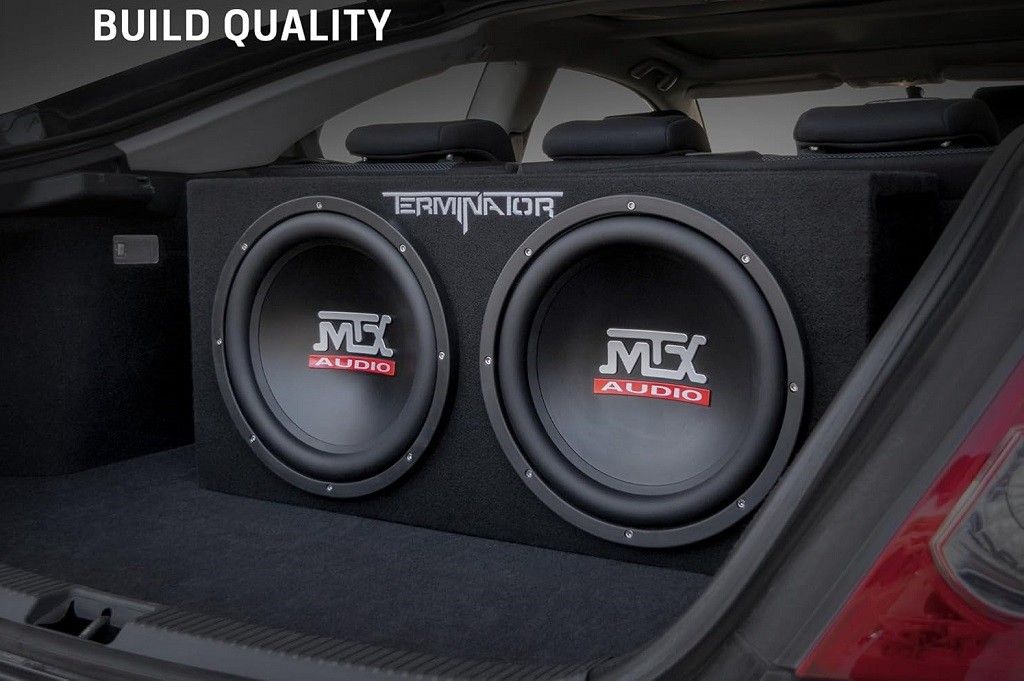
These subs reach deeper frequencies than smaller drivers. They move more air, creating a stronger bass impact. Sealed boxes need about 1.5 cubic feet. Ported enclosures require 2.5 to 3.5 cubic feet.
Most enthusiasts choose 12-inch subs for good reason. They work brilliantly for all music types. They fit in most vehicles with minor compromises. The wide selection means great options at every price point.
15-Inch and Larger: Maximum Impact
Fifteen-inch and 18-inch car audio subwoofers are for serious bass heads. These massive drivers move tremendous amounts of air. The output can be genuinely overwhelming.
These sizes demand significant space. A ported 15-inch box might need 4 to 5 cubic feet. That’s nearly the entire trunk in many cars. SUVs and trucks handle these monsters better.
The bass these subs produce is visceral. You don’t just hear it. You feel it in your bones. Internal organs vibrate. Vision blurs slightly. It’s an intense physical experience.
I’ve heard competition systems with quad 18-inch subs. The bass was so loud that it was painful. People stood 50 feet away and felt the pressure waves. It’s impressive but impractical for daily driving.
Installation Tips for Car Audio Subwoofers
Proper installation ensures optimal performance and prevents damage. These tips come from years of experience and countless installations.
Amplifier Matching
Your car audio subwoofers need adequate power. Match amplifier output to subwoofer specifications. Underpowering causes distortion and clipping. Overpowering can destroy drivers.
Check the subwoofer’s RMS rating. This is the continuous power handling. Choose an amplifier that delivers similar RMS power. A 500-watt RMS sub needs a 500-watt RMS amp. Simple.
My biggest installation mistake was underpowering a subwoofer. I connected a 1000-watt sub to a 300-watt amp. The sub barely moved. The amp clipped constantly. The distorted signal eventually fried the voice coil. I learned an expensive lesson.
Wiring Correctly
Use appropriate gauge wire for power connections. Subwoofer amplifiers draw significant current. Thin wires create resistance and voltage drop. They also pose fire hazards.
For amps under 500 watts, use 8-gauge wire. For 500-1000 watts, upgrade to 4-gauge. Beyond 1000 watts, use 1/0 gauge or larger. Never skimp on wire size.
Always fuse your power wire near the battery. The fuse protects against short circuits. If the wire chafes and grounds out, the fuse blows. This prevents electrical fires. I install fuses within 18 inches of the battery.
Ground connections matter tremendously. Scrape away paint to expose bare metal. Use a short, thick ground wire. Poor grounds cause humming, reduced output, and amplifier protection mode. I always test the grounds with a multimeter.
Securing the Enclosure
Car audio subwoofers and boxes become projectiles during accidents. Secure them properly to protect passengers. Use bolts, screws, or heavy-duty straps.
In hatchbacks and SUVs, bolt boxes to the floor. Drill through carpet and metal. Use large washers and lock washers. The enclosure should not budge when you push hard.
In trunks, secure boxes to seat backs or trunk floors. Some people use L-brackets bolted to the box and car. The goal is to prevent movement during sudden stops. I’ve seen unsecured subs fly forward during accidents. The results are terrifying.
Setting the Gain Properly
The gain control on amplifiers confuses many people. It’s not a volume knob. It matches the input voltage to the amplifier’s circuitry.
Set gains using a test tone and a multimeter. Play a 0dB test tone through your system. Increase the gain until you reach the desired voltage. This prevents distortion and clipping.
Alternatively, play dynamic music at maximum volume. Increase the gain until you hear distortion. Then back off slightly. This method works well for casual installations.
I see people crank gains to maximum constantly. They think it makes car audio subwoofers louder. It actually causes clipping and damages equipment. Proper gain setting protects your investment.
Break-In Period
New subwoofers need gentle use initially. The suspension components must loosen up. Play them at moderate volume for several hours. Gradually increase output over days or weeks.
I break in new car audio subwoofers with bass-heavy music at 50-60% volume. I run them for 10-12 hours over several days. The suspension loosens, and performance improves. The bass becomes deeper and more controlled.
Skipping the break-in risks damaging the spider and surround. These components might tear under full power when new. Patience during break-in extends subwoofer life significantly.
Common Mistakes to Avoid
Learning from others’ errors saves time and money. These mistakes plague beginners and experienced installers alike.
Choosing Looks Over Performance
Many people buy car audio subwoofers based on appearance. They want flashy LED lights and chrome finishes. They prioritize brand reputation over specifications. This approach rarely delivers satisfying bass.
Focus on specifications instead. Check sensitivity ratings, power handling, and frequency response. Read professional reviews. Understand your enclosure options. Performance matters more than aesthetics.
I’ve seen beautiful subwoofers that sound mediocre. I’ve also heard ugly subs that perform brilliantly. Your ears should make the final decision. You can’t hear LED lights.
Ignoring Enclosure Requirements
Every subwoofer has specific enclosure recommendations. Manufacturers provide minimum and maximum volumes. They specify sealed or ported preferences. Ignoring these guidelines guarantees poor performance.
I watched someone install a subwoofer designed for sealed boxes into a ported enclosure. The bass sounded terrible. It was boomy and muddy. The sub bottomed out constantly. Following the manufacturer’s specifications would have prevented this disaster.
Always check the manual or the manufacturer’s website. Build or buy enclosures matching their specifications. Your car audio subwoofers will reward you with optimal performance.
Electrical System Neglect
Powerful subwoofer systems strain electrical systems. Headlights dim when the bass hits. Voltage drops significantly. The amplifier enters protection mode randomly.
Upgrade your electrical system accordingly. Install a high-output alternator for powerful systems. Add a second battery for extreme setups. Upgrade the big three: battery to alternator, alternator to chassis, and battery to chassis.
My friend installed 2000 watts of car audio subwoofers. He didn’t upgrade his electrical system. His headlights dimmed severely during bass notes. The amplifier shut down constantly. After upgrading his alternator, everything worked perfectly.
Port Tuning Errors
Building ported boxes requires accurate calculations. Port length and diameter determine tuning frequency. Errors create poor bass response or damage subwoofers.
Use online calculators or software for port design. Double-check all measurements. Build precisely according to plans. Small mistakes significantly affect performance.
I built a ported box with ports 2 inches too long. The tuning dropped from 35Hz to 28Hz. The bass sounded weak in most songs. The sub bottomed out on certain frequencies. Rebuilding with the correct port length fixed everything.
Skimping on Installation Materials
Cheap wiring, weak connectors, and flimsy mounting harm system performance. These components create resistance, voltage drop, and poor connections. They fail prematurely.
Invest in quality installation materials. Buy good wire from reputable brands. Use proper crimp connectors or solder connections. Your car audio subwoofers deserve quality supporting components.
I’ve repaired systems where cheap materials caused problems. Corroded connections, melted wire insulation, and broken terminals plague budget installations. Spending slightly more upfront prevents expensive repairs.
Expert Insights from Real Enthusiasts
I interviewed several car audio enthusiasts about their experiences. Their insights provide valuable real-world perspective.
Mike’s Competition Journey
Mike competes in sound pressure level competitions. His system produces 157 decibels with four 15-inch car audio subwoofers. “People think it’s just about being loud,” he explains. “But consistency matters too. Your system must perform reliably. I’ve seen people chase peak numbers and blow equipment constantly.”
He emphasizes proper testing and measurement. “I test my system after every change. I use a termlab to measure actual output. This data guides my tuning decisions. Guessing wastes time and money.”
Mike’s advice for beginners? “Start small and learn. Install a single 12-inch sub yourself. Understand how everything works. Then upgrade gradually. Don’t jump straight to massive systems.”
Jessica’s Daily Driver Approach
Jessica drives a Honda CR-V with modest bass goals. She installed a single 10-inch sealed subwoofer five years ago. “I wanted better sound without sacrificing practicality,” she says. “The sealed box fits perfectly. I still have cargo space for groceries.”
Her car audio subwoofers complement her listening preferences. “I mostly listen to indie rock and singer-songwriter music. I needed clarity more than ridiculous output. The sealed 10-inch delivers exactly that.”
She recommends keeping expectations realistic. “You don’t need window-rattling bass for good sound. My system adds depth and fullness. That’s all I wanted. Mission accomplished.”
David’s Budget Success
David built his system on a tight budget. He found used car audio subwoofers on Facebook Marketplace. “I spent $300 total, including amplifier and wiring, and built my own box using scrap wood. The bass is fantastic.”
He emphasizes patience and research. “I watched YouTube videos for weeks. I learned enclosure design, wiring, and tuning. The knowledge saved me money and prevented mistakes.”
His tip for budget-minded builders? “Buy quality used equipment over cheap new gear. A five-year-old premium sub outperforms brand-new budget models. Also, don’t overlook DIY options. Building your own box saves hundreds.”
Rachel’s Sound Quality Focus
Rachel prioritizes sound quality above all else. Her system features two 8-inch car audio subwoofers in small sealed boxes. “I built the enclosures from MDF with extensive internal bracing. The bass is incredibly tight and accurate.”
She uses high-end components throughout. “I matched my subs carefully with my front stage. Everything integrates seamlessly. The bass extends the mids naturally. You can’t tell where the speakers stop and the subwoofer starts.”
Rachel’s philosophy resonates with serious listeners. “Most people think subwoofers are just for volume. But proper bass reproduction is about accuracy. Every instrument has low-frequency content. Subwoofers reveal those details.”
Maintenance and Troubleshooting
Car audio subwoofers require minimal maintenance, but occasional attention ensures longevity.
Regular Inspections
Check your subwoofer visually every few months. Look for tears in the surround or spider. Inspect the cone for damage. Ensure all mounting screws remain tight.
I discovered a surround tear during a routine inspection. Catching it early prevented complete failure. I replaced the recone kit myself for $80. Ignoring it would have destroyed the entire driver.
Cleaning
Dust accumulates on subwoofers over time. Use a soft brush or compressed air. Avoid touching the cone directly. Clean the grille or port opening regularly.
I use a camera lens brush for dusting cones. It’s soft enough to prevent damage. Regular cleaning maintains appearance and prevents dust from entering the voice coil gap.
Diagnosing Problems
If your car audio subwoofers stop working, start with simple checks. Verify amplifier power. Test connections. Check fuses. Many problems stem from loose wires.
A multimeter solves most diagnostic challenges. Test speaker impedance. Measure voltage at connections. Identify shorts or opens. I’ve fixed countless “broken” subs by reconnecting a loose wire.
When to Seek Help
Complex electrical problems require professional assistance. Amplifier repairs, voice coil replacement, and box re-tuning exceed most DIYers’ skills. Recognize your limitations.
I attempted to repair a blown amplifier once. Instead, I wasted hours and ultimately made things worse. A professional fixed it in 30 minutes for a reasonable cost. Know when to call experts.
The Future of Car Audio Subwoofers
Technology continues to advance in exciting directions. Several trends promise improved performance and convenience.
Digital Signal Processing
DSP technology is becoming more accessible. These processors allow precise tuning of frequency response. You can correct cabin acoustics digitally. Time alignment, equalization, and crossovers become infinitely adjustable.
Modern car audio subwoofers benefit tremendously from DSP. You can tune bass response to perfection. Eliminate peaks and nulls. Integrate seamlessly with full-range speakers. The results rival home theater systems.
Lightweight Materials
Manufacturers increasingly use lightweight, rigid cone materials. Carbon fiber, Kevlar, and aluminum reduce moving mass. Lower mass improves transient response and efficiency.
These advanced car audio subwoofers reproduce bass with stunning accuracy. They start and stop instantly and require less power for equivalent output. Performance improves while power consumption decreases.
Compact Designs
Engineers design increasingly powerful subs in smaller packages. Shallow-mount models fit where traditional subs can’t. Under-seat enclosures deliver surprising output.
This trend democratizes bass for everyone. Small car owners no longer sacrifice trunk space. Compact car audio subwoofers provide excellent performance in minimal space. Technology bridges the gap beautifully.
Making Your Decision
Choosing car audio subwoofers feels overwhelming initially. The options seem endless. But understanding your priorities simplifies the decision.
Consider your vehicle first. Small cars demand compact solutions. Large trucks accommodate bigger systems. Measure your available space accurately.
Think about your music preferences. Bass-heavy genres benefit from ported boxes. Acoustic music suits sealed designs. Match your system to your listening habits.
Set a realistic budget. Quality systems exist at every price point. Determine what you can spend comfortably. Factor in amplifier, wiring, and installation costs.
Decide whether you’ll install yourself or hire professionals. DIY saves money but requires time and skills. Professional installation guarantees proper results. Be honest about your abilities.
Most importantly, trust your ears. Listen to different systems if possible. Visit car audio shops. Attend competitions. Hear what various car audio subwoofers sound like. Your preferences matter most.
Your Journey Begins Now
Quality car audio subwoofers transform ordinary drives into extraordinary experiences. Your music deserves proper reproduction. Those low frequencies carry emotion and power. Factory speakers can’t deliver that impact. But the right subwoofer system certainly can.
Start small if you’re uncertain. A modest single 10-inch or 12-inch sub provides tremendous improvement. You can always upgrade later. But you’ll immediately hear the difference.
Take time to research and plan. Understand your options. Make informed decisions. Quality car audio subwoofers represent an investment in your daily happiness. Every commute becomes more enjoyable.
The road ahead sounds better with deep, powerful bass. Your favorite songs gain new life. You discover details you never noticed. Music becomes more immersive and engaging.
So take that first step. Explore your options. Choose your car audio subwoofers wisely. Install them properly. Then hit the road and experience music as it was meant to be heard.
Your ears—and your soul—will thank you for it. The bass is calling. Will you answer?
